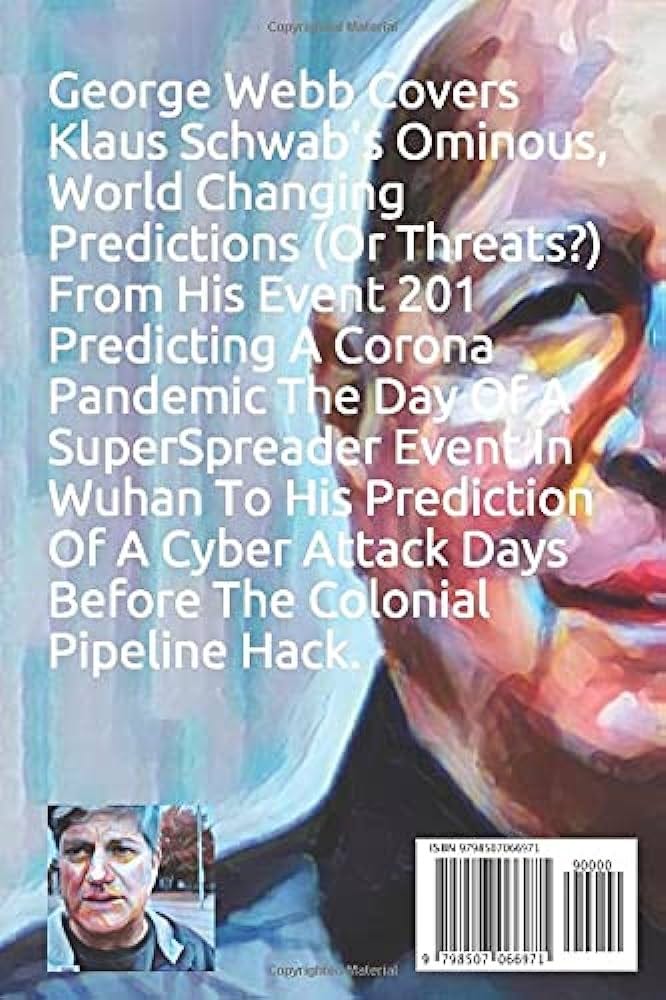Cyber Nightmares: The Dark Web of Our Interconnected Existence!
"Discover the Shocking Truths That Could Collapse Our Digital Existence – Are You Prepared?"
In the contemporary landscape, our world bears resemblance to an intricate performance, a profound spectacle echoing perhaps the epochs predating the great flood. During that era, an enigmatic civilization, purportedly overseen by entities such as the Anunnaki, fallen angels, and potentially other interdimensional beings obscured from modern understanding, could have orchestrated the demise of their societies.
Today, I posit that our existence remains under the influence of sinister and demonic forces, driven by an agenda to obstruct our very being once again.
The ancients wielded technologies beyond the scope of our present imagination, accomplishing feats that elude our comprehension today. However, I contend that our current technological prowess, formidable as it may be, harbors the potential to turn against us.
In my perspective, the paramount threat confronting humanity lies in our interconnectedness. The foundation of our daily lives, encompassing activities such as grocery shopping, agriculture, communication, supply chains, electricity, energy, and wealth storage, rests precariously on the edifice of connectivity. This intricate reliance exposes us to vulnerability, as our interconnected systems may face unforeseen jeopardies, disrupting the fabric of our existence when least anticipated.
Evil individuals globally have even issued warnings about this potential threat to humanity.
At Cyber Polygon 2020, Schwab sounded the alarm about an impending cyber pandemic that would shock society to its core.
“We all know, but still pay insufficient attention to, the frightening scenario of a comprehensive cyber attack, which would bring a complete halt to the power supply, transportation, hospital services, our society as a whole,” cautioned Schwab.
“The COVID-19 crisis would be seen in this respect as a small disturbance in comparison to a major cyber attack,” he emphasized.
“A cyber attack with COVID-like characteristics would spread faster and farther than any biological virus” — World Economic Forum, 2021
“If cyber threats continue without mitigation, governments will continue to retaliate against perpetrators (actual or perceived), leading to open cyberwarfare, further disruption for societies” — WEF Global Risks Report, 2022
“If cyber threats continue without mitigation, governments will continue to retaliate against perpetrators (actual or perceived), leading to open cyberwarfare, further disruption for societies and loss of trust in government’s ability to act as digital stewards,” World Economic Forum, 2023.
Due to geopolitical instability, a “catastrophic cyber event” is likely to occur in the next two years, according to the World Economic Forum (WEF 2023).
This indeed validates the present circumstances, a topic that seems largely unreported. Despite the escalating frequency of attacks each month, there's a lack of widespread coverage. We've found a compiled list of the most significant incidents, resulting in multimillion-dollar losses. The outlook, as suggested by these "experts," indicates a potential worsening of the situation over the next two years.
Based on the cyber-attacks observed in 2023 reflect a paradigm shift where state-sponsored actors increasingly employ sophisticated cyber operations as integral components of geopolitical strategies, encompassing hybrid warfare, critical infrastructure targeting, and information warfare. The global impact of these attacks underscores the interconnected nature of cyber threats, necessitating international collaboration and coordinated responses. The escalating use of advanced techniques, financial motivations, and the challenges of attribution contribute to a complex cybersecurity landscape. Organizations face heightened risks, requiring a multifaceted approach that combines enhanced cybersecurity measures, resilience planning, and collaboration with the broader cybersecurity community to effectively address evolving and interconnected cyber threats.
By analyzing the significant cyber attacks in 2023, a common denominator is the escalating sophistication, organization, and strategic intent behind these cyber operations. Several key themes emerge:
State-Sponsored Activity: Many of the cyber attacks are attributed to nation-states or state-sponsored actors. These entities often have advanced capabilities, substantial resources, and strategic motivations that go beyond typical cybercriminal activities. This points to the increasing weaponization of cyber capabilities by nation-states.
Geopolitical Motivations: A considerable number of cyber attacks are politically motivated and align with geopolitical events and tensions. Nation-states leverage cyber operations to achieve strategic objectives, influence international relations, or retaliate against perceived adversaries.
Hybrid Warfare: Cyber operations are increasingly integrated into broader hybrid warfare strategies. These campaigns involve a combination of conventional military actions, economic measures, and cyber attacks. Cyber operations are used as tools to achieve geopolitical goals without direct military engagement.
Critical Infrastructure Targeting: There is a notable focus on targeting critical infrastructure, including energy, transportation, healthcare, and defense systems. Attacking these essential services can have severe real-world consequences, making them attractive targets for state-sponsored actors seeking strategic advantages.
Sophisticated Techniques: The use of advanced and sophisticated techniques, such as zero-day exploits, supply chain attacks, and advanced persistent threats (APTs), is a common thread. These tactics allow attackers to bypass traditional cybersecurity measures and remain undetected for extended periods.
Global Impact: The interconnected nature of the attacks highlights their potential global impact. Cyber operations are not confined by geographical boundaries, and their effects can ripple across nations and industries, creating a shared vulnerability on the global stage.
Information Warfare: Beyond traditional espionage, there is an emphasis on information warfare. Disinformation campaigns, data manipulation, and attempts to influence public opinion are integral parts of cyber operations, reflecting a broader strategy to shape narratives and perceptions.
Financial Incentives and Extortion: While geopolitical motivations are prevalent, financial incentives also play a role. Ransomware attacks, in particular, demonstrate the convergence of geopolitical and financial motives, as state-sponsored actors engage in ransom-driven attacks for monetary gain.
Use of False Flags: Attribution remains challenging in the cyber domain, with attackers using false flags to mislead investigators about their true identity. This further complicates the task of determining responsibility and holding actors accountable.
Target Diversity: Attackers target a diverse range of sectors, including government, military, healthcare, finance, and critical infrastructure. This diversity underscores the broad spectrum of interests and objectives pursued by state-sponsored cyber actors.
The events unfolding in the cyber realm during 2023 alone, offer a stark warning about the fragility of our interconnected life and society, particularly within our financial systems. The increasing sophistication and geopolitical motivations behind state-sponsored cyber attacks highlight vulnerabilities that extend beyond digital realms to impact the very foundations of our daily lives. In this age of technological interdependence, where financial transactions, critical infrastructure, and even the dissemination of information are conducted online, the potential fallout from a large-scale cyber disruption cannot be underestimated. As we witness the evolution of hybrid warfare tactics and the growing nexus between cyber capabilities and geopolitical objectives, it becomes imperative for individuals and institutions to reevaluate their preparedness for systemic disruptions.
Diversifying one's wealth beyond the traditional financial system takes on a new significance in this context. A prudent approach involves constructing a resilient physical portfolio that includes not only traditional assets like cash, gold, and silver but also essential resources for sustained self-sufficiency, such as stored food and water.
Acknowledging the importance of self-defense measures, including firearms and ammunition, becomes part of a comprehensive strategy to navigate potential disruptions to societal structures. The imperative is not to succumb to fear but rather to approach these uncertainties with a strategic mindset that prioritizes individual and collective resilience in the face of an evolving and increasingly complex landscape.
Like, Subscribe, and Share to Spread the Word!
If you found this analysis informative and eye-opening, we invite you to like, subscribe, and share this video to help us spread the word. Together, we can build a community of Financial Anarchy advocates who are dedicated to promoting financial literacy and advocating for sound monetary policies. By amplifying our message, we can empower individuals to take control of their financial well-being and contribute to a more equitable and sustainable future.
Support Our Work with a Bitcoin Donation
We also offer the opportunity to support our work and help us continue building the Financial Anarchy community. If you would like to make a contribution, we gratefully accept donations in Bitcoin. Your support will enable us to create more educational content, engage in meaningful activism, and further our mission of challenging the status quo. To donate, please use the following Bitcoin address:
Thank you for joining us on this journey of understanding and change. Together, we can shape a brighter financial future for all.












